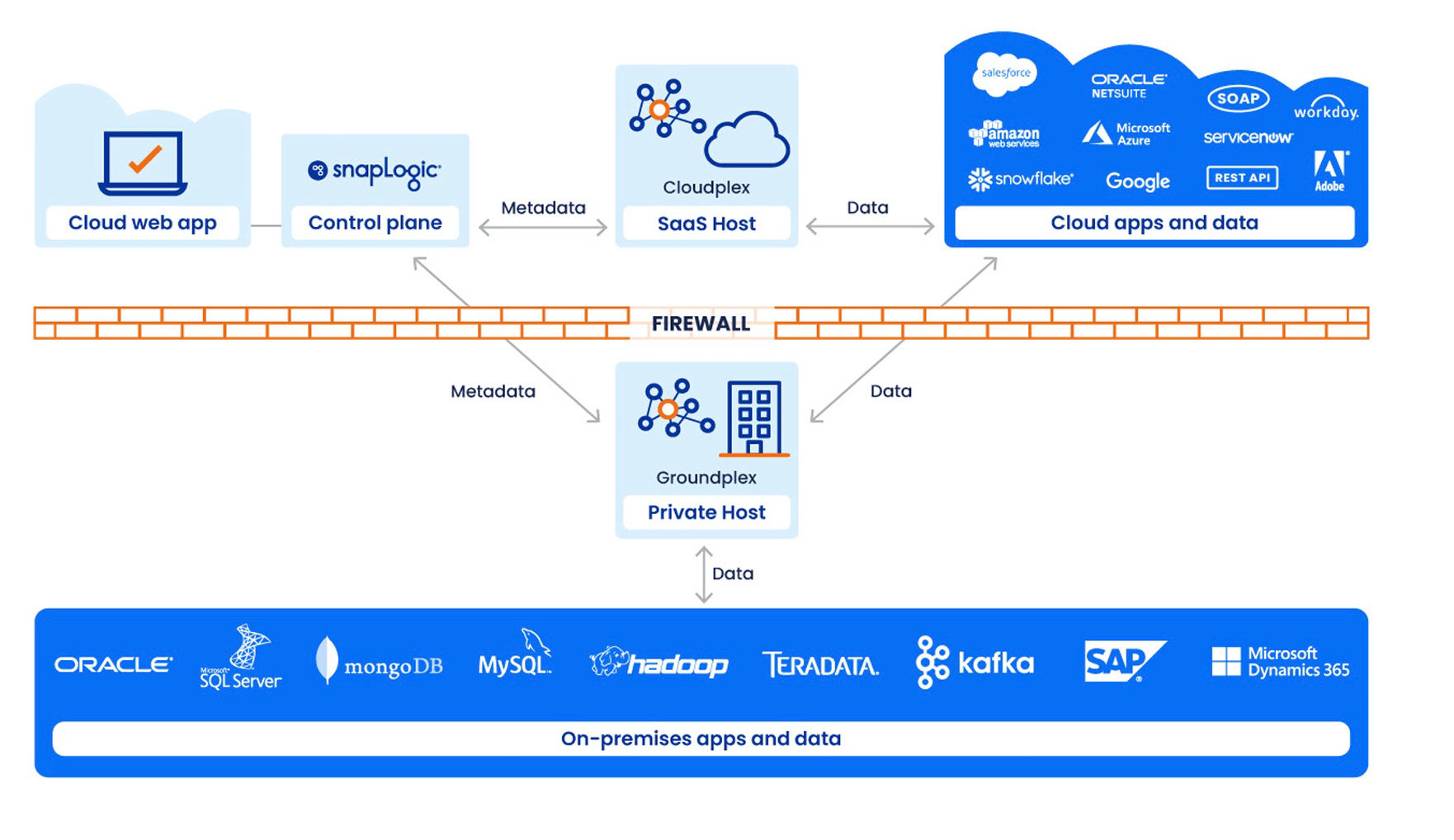Snaplexes
An overview of Snaplexes (both Cloudplex and Groundplex).
- Standard, Resumable, and Ultra Tasks
- Triggered Task and Scheduled Tasks
- SnapLogic APIs and proxies
- API policies in APIM and Tasks in Manager
- AutoSync integrations
Snaplex types
- Cloudplex: Managed and provisioned by SnapLogic. For Cloudplex deployment contact SnapLogic CSM.
- Groundplex: Managed and provisioned by user. A Groundplex can be set up on-premises or in the cloud.
| Type of Snaplex | Advantages | Disadvantages |
|---|---|---|
|
|
|
|
Self-managed (Groundplex) |
|
|
Snaplex architecture
- One or more JCC nodes
- Load balancer
- FeedMaster
The following diagram illustrates the data flow in the SnapLogic architecture for both types of Snaplexes and the relationship between the control plane and the data plane.

Load balancing algorithm
Depending on the number of active threads, the load-balancing algorithm sends the execution requests to nodes with the lightest loads first. If multiple nodes have similar light loads, the algorithm randomly selects a node among them and sends the execution request to it.
Security
To perform most administrative tasks in a Snaplex, you must be an Environment admin. For a Groundplex, you also need admin access to your on-premises network. Learn more at SnapLogic Platform overview
Monitor
You can monitor Snaplexes from the SnapLogic Monitor.


